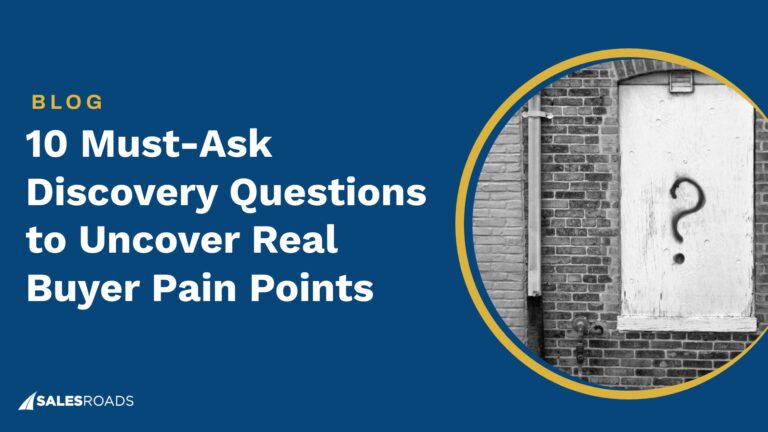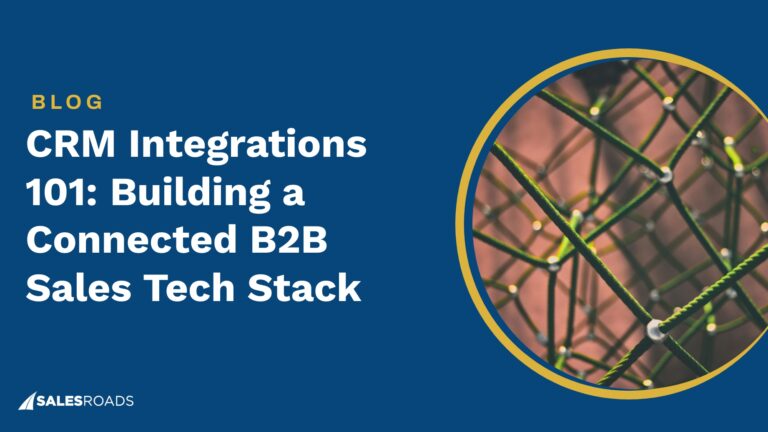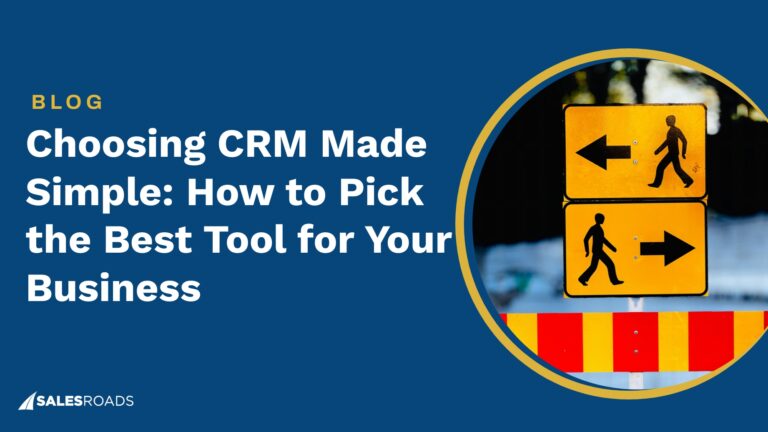Clear metrics and performance goals aren’t optional for sales teams where daily activity directly impacts pipeline growth. It’s the difference between steady progress and wasted potential.
But here’s the catch: not all numbers tell the right story.
Too often, sales reps chase vanity metrics or get buried in dashboards that don’t actually move the needle. To drive real results, you need to focus on SDR KPIs and performance targets that align with business outcomes, not just busyness.
Why SDR KPIs Are the Backbone of Sales Growth
If your sales team isn’t hitting the mark, chances are your SDR KPIs aren’t aligned with your growth goals.
KPIs are more than just numbers. They define what success looks like for your SDRs and give your team direction and focus.
Clear SDR performance goals help eliminate guesswork. Instead of relying on gut feelings, managers and reps can use KPIs to track exactly where they stand and what needs improvement.
Whether it’s the number of qualified meetings booked or the speed of follow-up, the right SDR performance targets drive accountability and consistency across the team.
More importantly, KPIs keep your sales funnel healthy. If SDRs aren’t booking meetings or qualifying leads, your pipeline will dry up fast. That’s why high-performing sales organizations treat SDR KPIs as non-negotiable. These indicators directly impact pipeline velocity, revenue forecasts, and long-term sales growth.
Without solid SDR KPIs in place, your team may stay busy but not productive. By setting and tracking meaningful performance goals, you create a culture of ownership, learning, and measurable success.
SDR Metrics vs. SDR KPIs: What’s the Difference and Why It Matters
Sales teams often mix up SDR metrics and SDR KPIs, but understanding the difference is key to managing SDR performance effectively.
SDR metrics are data points that tell you what’s happening—think number of calls made, emails sent, or LinkedIn connections. They give you a snapshot of activity, but they don’t always tell you if your reps are driving results.
SDR KPIs, on the other hand, are tied to outcomes. These include meetings booked, opportunities created, or pipeline value influenced. In short, SDR KPIs are your performance targets—benchmarks that reflect business impact.
Here’s why the distinction matters: you can hit your activity metrics without hitting your SDR performance goals. A rep might make 100 calls a day but still fall short on qualified meetings. That’s why tracking only metrics can be misleading.
To build a high-performing SDR team, you need both. Use metrics to coach day-to-day behavior. Use KPIs to measure whether those behaviors are driving the right outcomes. When you align both, you create a system that supports smarter prospecting, better conversions, and consistent sales pipeline growth.
Core SDR KPIs Every Manager Should Monitor
SDRs play a vital role in building your pipeline, but to manage their performance, you need the right KPIs in place. SDR KPIs help managers track what really matters: the outcomes that drive revenue.
While SDR metrics like calls made or emails sent show activity, SDR KPIs highlight results. These SDR performance goals act as your north star. They keep your reps focused on impact, not just effort.
Below are the most important SDR performance targets that every B2B sales manager should keep an eye on:
Meetings Booked per Rep
This is one of the most basic yet critical SDR KPIs. It measures how many meetings each rep successfully schedules with qualified prospects. Meetings booked per rep give you a clear view of who is consistently filling the top of the funnel.
If a rep is hitting activity numbers but not booking meetings, it’s time to assess the quality of outreach and messaging. This KPI bridges the gap between quantity and effectiveness, making it a must-track for SDR performance.
Opportunities Created
Meetings don’t mean much unless they move the pipeline forward. That’s why “opportunities created” is one of the most valuable SDR performance goals.
This KPI tracks how many meetings actually convert into sales opportunities. It’s a strong indicator of lead quality and rep qualification skills. A high number here means your SDRs aren’t just booking calls—they’re booking the right ones.
Pipeline Value Sourced
This KPI looks beyond volume and into the potential revenue that SDRs are sourcing. Pipeline value sourced shows the total dollar value of opportunities that originated from SDR efforts.
This SDR performance target helps connect early pipeline work to future revenue. It also allows sales managers to see which reps are sourcing not just more opportunities, but more valuable ones.
Lead-to-Opportunity Conversion Rate
This KPI tracks the percentage of leads that become sales opportunities. It’s one of the most telling SDR KPIs when it comes to rep effectiveness.
A low conversion rate may point to issues with targeting, messaging, or lead qualification. A strong rate suggests that SDRs understand your ICP and are engaging the right prospects.
SQL to Close-Won Ratio
This is where things get real. The SQL to Close-Won ratio looks at how many sales-qualified leads actually turn into closed deals. While SDRs aren’t responsible for closing, this KPI shows how well they’re setting up the rest of the sales team for success.
If deals are consistently falling through after handoff, it could mean the SQL criteria needs tightening, or that leads are being passed too early. This ratio connects SDR performance targets to overall revenue impact, making it a powerful KPI to monitor.
Activity-Based SDR Metrics That Predict Performance
Not all SDR metrics are created equal, but the right activity metrics can help predict whether your SDRs are on track to hit their goals. While SDR KPIs measure outcomes, activity-based metrics offer leading indicators that show how reps are working toward those SDR performance targets.
Below are the top activity-based metrics that directly influence SDR performance goals.
Outbound Calls per Day
This is a foundational SDR metric and still one of the most effective. Tracking outbound calls per day helps you understand whether reps are putting in the necessary effort to generate conversations.
If SDRs are falling short on call volume, it’s tough to hit bigger SDR performance targets like meetings booked or opportunities created. High-performing teams typically set daily or weekly call benchmarks to ensure consistent outreach.
Keep in mind, though—calls alone aren’t enough. You need to pair this with connection rates and talk time to get the full picture.
Email Open & Reply Rates
Email performance is another critical activity metric. Open and reply rates tell you if your subject lines and content are resonating with prospects.
A high open rate with a low reply rate? That’s a sign your messaging may need work. On the other hand, strong reply rates suggest your SDRs are hitting the mark and moving prospects into conversations.
These metrics are key for improving SDR performance goals around engagement and qualified appointment setting. They also help teams experiment and iterate on messaging fast.
LinkedIn Touches and Responses
Social selling matters—especially in B2B sales. LinkedIn touches and response rates help you measure how well your SDRs are using the platform to connect with decision-makers.
This SDR metric is becoming more important as buyers spend more time on social channels. Tracking touches like connection requests, InMails, and comments—alongside actual replies—can reveal which reps are building relationships effectively.
Used the right way, LinkedIn activity supports SDR KPIs like meetings booked and opportunities created.
Voicemail Return Rate
Voicemails often get ignored, but they still offer value when done right. The voicemail return rate measures how many callbacks your SDRs are receiving after leaving messages.
This SDR metric helps you understand the quality of voicemails and whether they’re sparking curiosity. A low return rate may signal generic scripts or poor targeting.
When optimized, voicemail can warm up cold prospects and drive call-backs, making it a powerful (and often overlooked) contributor to your SDR performance targets.
Talk Time per Connect
It’s not just about getting someone on the phone. It’s what happens next that counts. Talk time per connect is a strong indicator of how well your SDRs handle conversations once they’ve made contact.
Short calls might mean reps are getting shut down early. Longer calls suggest deeper engagement and a stronger chance of qualification. This SDR metric helps managers spot coaching opportunities in live conversations.
Better conversations lead to better results—and ultimately, stronger SDR KPIs across the board.
Velocity Metrics: How Fast Is Your SDR Engine Running?
Velocity metrics give you insight into the speed and efficiency of your sales development process. When used alongside traditional SDR KPIs, these speed-focused SDR metrics can uncover bottlenecks and highlight where your team might be losing momentum.
Let’s break down the core velocity metrics that matter most.
Time to First Touch
This metric measures how quickly an SDR engages a new lead after it enters your system. Whether it’s an inbound form submission or an outbound prospecting list, a fast first touch sets the tone for the rest of the relationship.
A shorter time to first touch often leads to higher response rates and better conversion. If reps wait too long, you risk losing the lead’s attention—or worse, a competitor gets there first.
Reducing time to first touch should be a core part of your SDR performance goals. It shows prospects you’re responsive and ready to help.
Follow-Up Lag Time
Follow-up lag time tracks how long it takes SDRs to follow up after the initial outreach. It’s one of those SDR metrics that often flies under the radar, but it makes a big impact on engagement.
Buyers today expect persistence, but not spam. A structured follow-up cadence—executed quickly and consistently—boosts your chances of getting a response.
Long gaps between touchpoints can kill momentum and hurt your SDR KPIs around meetings booked and opportunities created. Tighten up this timing, and you’ll see better results.
Time from Meeting to Opportunity
After a successful meeting, how long does it take to convert that conversation into a real opportunity? This metric bridges the gap between top-of-funnel activity and pipeline generation.
If the time from meeting to opportunity is too long, it could indicate poor qualification, missed handoffs, or weak post-meeting follow-up. All of those can hold your team back from hitting SDR performance targets.
Optimizing this handoff period helps improve the quality and pace of your pipeline. It also strengthens the connection between SDR metrics and revenue-driven SDR KPIs.
Lead Response Time
Speed matters—especially when it comes to responding to inbound leads. Lead response time measures how quickly SDRs reach out after a lead shows interest.
Studies show that contacting a lead within five minutes can increase conversion rates by up to 10x. So when lead response time lags, so do your results.
This is one of the most critical SDR metrics for teams with inbound motion. Making fast responses a core part of your SDR performance goals ensures you capitalize on buyer intent in real time.
Setting and Adjusting SDR Performance Goals
SDR performance goals are more than numbers on a dashboard—they’re the roadmap for how your team contributes to revenue. When goals are realistic, measurable, and aligned with business objectives, your SDRs stay motivated and focused.
But when they’re off? You risk burnout, misaligned priorities, and poor pipeline quality.
The best SDR performance goals are built on a strong foundation of data. Start by reviewing historical SDR metrics and SDR KPIs. Look at trends in meetings booked, emails sent, reply rates, and opportunities generated.
This data gives you insight into what’s realistic for your team based on past performance.
From there, tie those metrics to business outcomes. For example, if your average SDR books 15 meetings a month and converts 20% into qualified pipeline, that should inform both your SDR performance targets and your revenue expectations.
Don’t pull numbers out of thin air—let the data guide your planning.
Also, keep in mind that goals aren’t set-and-forget. Markets shift. Tools change. Messaging evolves. Regularly review SDR metrics to see if your goals need to flex.
If your SDRs consistently exceed targets, it might be time to raise the bar. If they’re falling short, it could signal unrealistic expectations—or gaps in SDR training, tech, or process.
When adjusting goals, bring your reps into the conversation. Transparency builds trust. If reps understand how goals are set and why they’re changing, they’re more likely to buy in and stay committed.
Finally, make sure you’re setting a mix of activity-based and outcome-based goals. Activities like calls made or emails sent drive consistency. Outcomes like sales-accepted leads or pipeline sourced drive results. A healthy mix helps SDRs stay focused on what matters most.
Bottom Line
If you want your SDR team to consistently drive pipeline and revenue, you can’t afford to treat performance tracking as an afterthought. The right SDR metrics and SDR KPIs give you clarity. Clear SDR performance targets provide direction. And well-calibrated SDR performance goals fuel motivation.
When all three are working together, you’re not just measuring activity—you’re building momentum.










